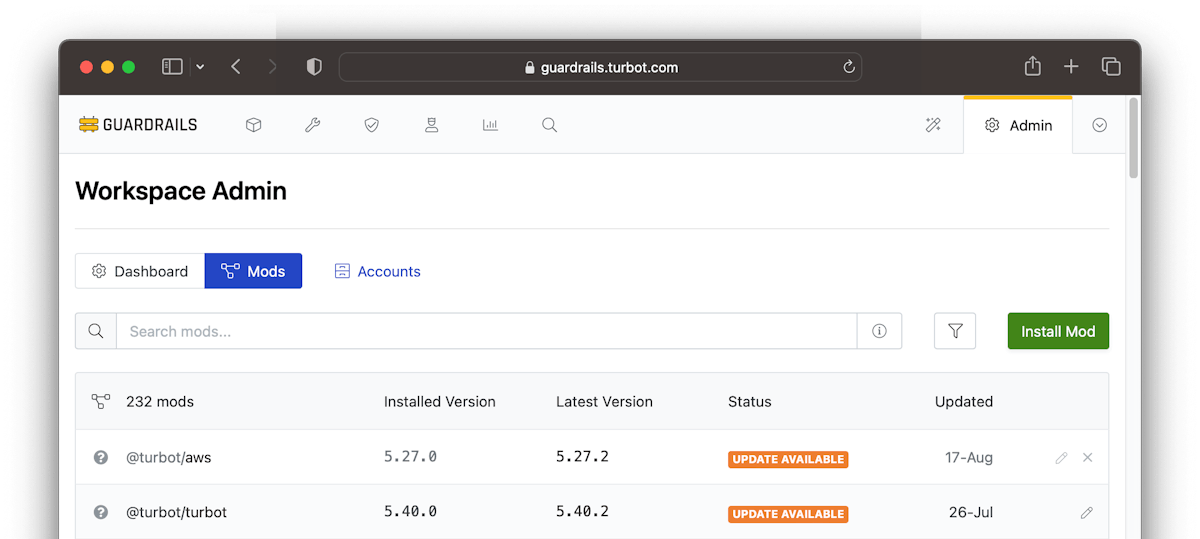What's new?
You now have more control over when Guardrails creates controls and policy values based on policy settings. Previously, Guardrails would evaluate all possible controls for every resource by default. With this release, Guardrails can be configured to only create controls impacted by policy settings, improving both user experience and backend performance.
The Turbot > Materialization policy supports two modes:
- Always (Default) — Create controls and policy values for all applicable resources, even if no setting exists. This matches legacy behavior.
- Automatic — Create controls and policy values only if a setting is explicitly defined for the primary policy. This can significantly reduce noise and improve performance.
Note that some types, such as those used to discover resources and configure accounts, are always created regardless of the materialization mode.
To get started, we recommend setting the Turbot > Materialization policy to Automatic and updating any cloud mods currently installed, like aws, aws-s3, azure, to their latest versions.
In the upcoming TE version, the default for the Turbot > Materialization policy will change from Always to Automatic. To retain the existing behavior, set the Turbot > Materialization policy to Always before upgrading to the next TE version.
Requirements
- Upgrade to
5.54.0 requires your workspace to be on 5.53.x - TEF: 1.66.0
- TED: 1.9.1
- Mods:
Base images
- Alpine: 3.17.5
- Ubuntu: 22.04.3
